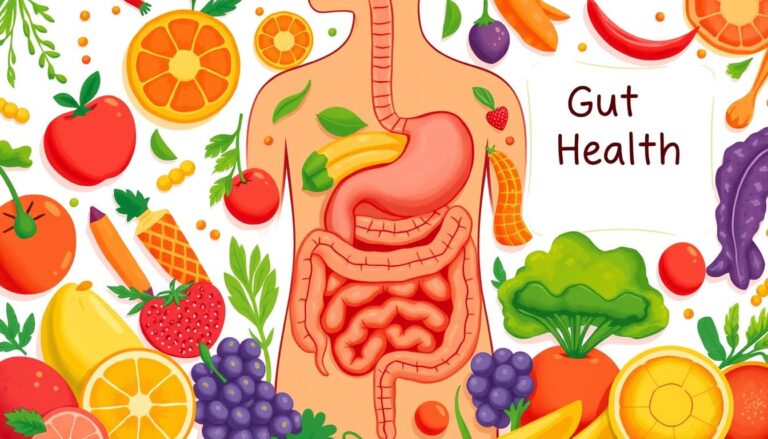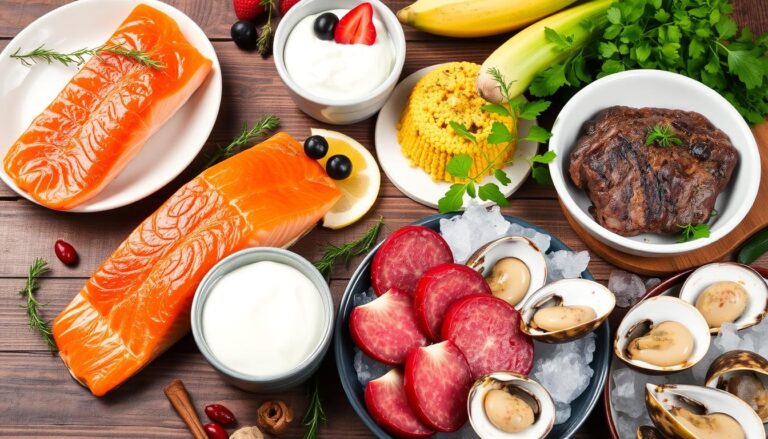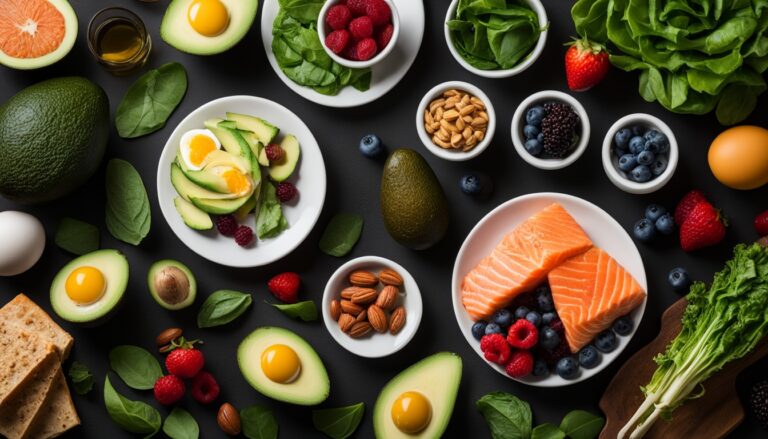It’s a curious question, isn’t it? Can a simple mineral like potassium truly relax our blood vessels and boost our heart health? The answer is yes. Potassium, a key electrolyte, helps keep blood flowing well and controls blood pressure.
But how does it do this, and what benefits do we get from it? Let’s explore how potassium’s effects on blood vessels can improve our health.
Key Takeaways
- Potassium is a vasoactive mineral that can increase blood flow and promote vasodilation.
- Potassium triggers the hyperpolarization of vascular smooth muscle cells, leading to relaxation and increased blood supply.
- Potassium-rich endothelial cells release potassium ions, contributing to endothelium-dependent relaxations.
- Adequate potassium intake is essential for maintaining cardiovascular health and regulating blood pressure.
- Incorporating more potassium-rich foods into your diet can be a simple and effective way to support your vascular system.
The Vasodilating Effects of Potassium
Potassium is a mineral that can make blood vessels wider. This happens when it is added to the blood flow. It works by making vascular smooth muscle cells relax. This helps tissues like skeletal muscle and the brain get more oxygen and nutrients.
Potassium’s Role in Vascular Smooth Muscle Relaxation
Potassium helps blood vessels relax by affecting vascular smooth muscle cells. It does this by making these cells less active. This leads to wider blood vessels and more blood flow.
Increased Blood Flow and Metabolic Needs
The vasodilating effects of potassium increase blood flow. This is good for tissues like skeletal muscle and the brain. It helps them work better by giving them what they need to function.
| Key Findings | Outcome |
|---|---|
| High sodium intake significantly increased blood pressure in hypertensive Dahl rats | Potassium supplementation attenuated the hypertension induced by high sodium intake |
| Systolic arterial pressure (SAP) was significantly lower in the group supplemented with potassium (H-NaK group) compared to the group with high sodium intake (H-Na group) | Potassium supplementation improved relaxation in response to acetylcholine, adenosine 5′-diphosphate (ADP), and isoproterenol in hypertensive Dahl rats |
| The protective effect of potassium on the endothelial function was achieved through increased endothelial nitric oxide production | Potassium supplementation increased sodium excretion and nitric oxide (NO) production in the kidney of hypertensive Dahl rats |
The vasodilating effects of potassium are key for keeping tissues healthy. They help organs like the brain and skeletal muscle get the blood they need. This is important for their function.
Understanding the Benefits of Potassium
Potassium is a key mineral for keeping blood pressure healthy. Studies show that eating more potassium can lower blood pressure. This is true for people with normal and high blood pressure.
Potassium’s Ability to Reduce Blood Pressure
Potassium helps by making blood vessels relax. This is called vasodilation. It makes blood flow better and lowers blood pressure. It takes about 4 weeks to see the effects of more potassium.
Safe Potassium Intake Guidelines
Healthy adults should eat 3,400 milligrams (mg) of potassium each day. Women should aim for 2,600 mg. During pregnancy and breastfeeding, these amounts go up to 2,900 mg and 2,800 mg, respectively. But too much potassium can be bad, especially for those with kidney issues. Always talk to a doctor before changing your potassium intake.
| Potassium Intake Recommendations | Amount (mg/day) |
|---|---|
| Adult Males (19+ years) | 3,400 mg |
| Adult Females (19+ years) | 2,600 mg |
| Pregnancy | 2,900 mg |
| Breastfeeding | 2,800 mg |
https://www.youtube.com/watch?v=sL1Bxz0Vn4s
Eating the right amount of potassium and choosing potassium-rich foods can help manage blood pressure. It also supports cardiovascular health.
Potassium and the DASH Diet
The DASH diet focuses on foods like fruits, veggies, whole grains, and low-fat dairy. It’s low in sodium, sweets, and red meats. This diet helps lower blood pressure by being high in potassium and low in sodium.
A study by Kim et al. (2021) shows hypertension affects many people worldwide. Yet, there’s been progress in treating and controlling it from 1990 to 2019, thanks to 1201 studies with 104 million participants (Zhou et al., 2021).
The DASH diet is great for heart health and managing blood pressure. It encourages eating foods rich in potassium, such as:
- Leafy greens like cabbage, kale, spinach, and collard greens, which are also high in magnesium and other beneficial nutrients
- Potatoes, which provide about 13% of the daily value of potassium in a single medium-sized potato
- Fatty fish like mackerel, salmon, and sardines, which are rich in omega-3 fatty acids
- Nuts and seeds, such as peanuts, pistachios, almonds, and chia seeds, which offer a range of heart-healthy nutrients
Eating these potassium-rich, heart-healthy foods helps manage blood pressure and supports heart health.
“Consuming a diet rich in potassium-containing foods, as recommended by the DASH diet, can be a powerful tool in managing hypertension and promoting overall cardiovascular health.”
| Food Item | Potassium Content | Potential Benefits |
|---|---|---|
| Potatoes | 13% of daily value | Excellent source of potassium |
| Leafy Greens | High in magnesium and other nutrients | Lower blood pressure and decrease heart disease risk |
| Kiwis | May reduce systolic blood pressure | Consume daily for potential blood pressure benefits |
| Whole Grains | 8% reduction in high blood pressure risk per 30g increase | Incorporate more whole grains into the diet |
| Fatty Fish | Rich in omega-3 fatty acids | Can help reduce blood pressure |
| Nuts and Seeds | High in heart-healthy nutrients | Peanuts, pistachios, almonds, and chia seeds may lower blood pressure |
Following the DASH diet supports heart health and blood pressure management. It focuses on nutrient-rich foods high in potassium. This approach is key to maintaining good heart health.
Does potassium relax blood vessels?
Many studies show that potassium vasodilation is real. Potassium can relax blood vessels. This makes blood flow better and helps tissues get more oxygen and nutrients.
Research also shows that potassium can lower blood pressure. It helps blood vessels work better. This leads to less resistance and better blood flow.
Exploring the Scientific Evidence
A study in the Journal of the American Heart Association found potassium helps lower blood pressure. It said potassium’s ability to relax blood vessels and balance sodium is key to its health benefits.
| Potassium Intake Recommendation | Cardiovascular Benefits |
|---|---|
| Men should aim for 3,400mg (3.4g) of potassium daily, while women should target 2,600mg (2.6g). | Increased blood flow, reduced blood pressure, and better delivery of oxygen and nutrients to tissues. |
Another study in the Journal of the American College of Nutrition showed the DASH diet lowers blood pressure. It said potassium’s vasodilating effects and its counteracting sodium’s effects are why.
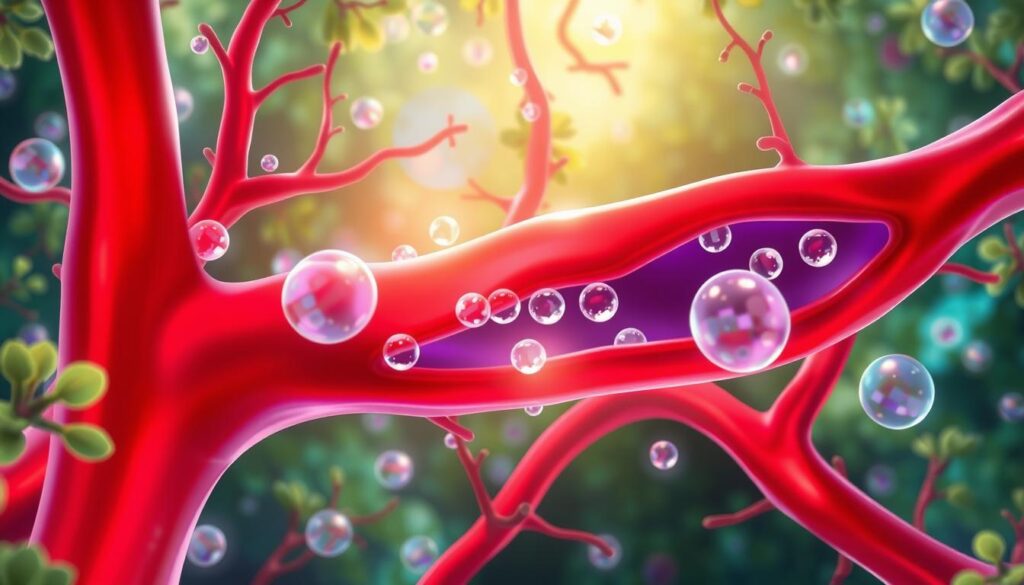
“The scientific evidence clearly indicates that potassium plays a crucial role in promoting blood vessel relaxation and supporting overall cardiovascular health.”
Dietary Sources of Potassium
Bananas are known for their potassium, but many fruits and veggies are also great sources. Adding different potassium-rich foods to your diet can help. This supports your heart health.
Fruits and Vegetables Rich in Potassium
Here are some top foods for potassium:
- Apricots
- Cantaloupe
- Guava
- Kiwifruit
- Oranges
- Prunes
- Acorn squash
- Beet greens
- Spinach
- Sweet potatoes
- Bananas
These foods are not just high in potassium. They also have lots of vitamins, minerals, and antioxidants. These nutrients are good for your health and well-being.
| Potassium-Rich Fruits | Potassium Content (mg per serving) |
|---|---|
| Bananas (1 medium) | 422 |
| Oranges (1 medium) | 237 |
| Cantaloupe (1 cup cubed) | 431 |
| Kiwifruit (1 medium) | 252 |
Eating a variety of these foods daily can help you get enough potassium. It’s good for your heart and overall health.
Balancing Sodium and Potassium Intake
Keeping a balance between sodium and potassium is key for heart health. Research finds that the sodium-to-potassium ratio affects blood pressure and cardiovascular risk more than each nutrient alone.
Our diet often has too much sodium from processed foods and eating out. It lacks potassium because we eat fewer fruits and veggies. This imbalance can lead to hypertension and other health problems.
The Importance of the Sodium-to-Potassium Ratio
The Intersalt study in 1988 looked at sodium and potassium excretion. A 2009 meta-analysis highlighted potassium’s role in lowering cardiovascular disease risk.
By eating more potassium and less sodium, we can control blood pressure. A 1997 meta-analysis showed potassium supplements can lower blood pressure. A 1999 study found that calcium, potassium, and magnesium can reduce stroke risk.
| Nutrient | Recommended Daily Target | Average American Intake |
|---|---|---|
| Sodium | 2,300 mg | 3,400 mg |
| Potassium | 4,600 mg | 2,640 mg |
Americans usually eat almost twice the recommended sodium and less potassium than needed. A higher potassium-to-sodium ratio is good for the heart.

To better the sodium-potassium balance, eat more potassium-rich foods like sweet potatoes and bananas. Also, cut down on processed foods that are high in sodium.
Strategies for Increasing Potassium Intake
Keeping enough potassium in your body is key for healthy blood vessels and blood pressure control. There are many ways to up your potassium levels and enjoy the benefits. Let’s look at some easy changes in diet and lifestyle to meet your daily potassium needs.
Embrace Potassium-Rich Foods
- Add more fruits and veggies to your meals, as they’re full of potassium.
- Steer clear of canned or frozen veggies with extra sodium, which can harm your potassium goals.
- Swap processed snacks for fresh ones like bananas, sweet potatoes, leafy greens, and avocados.
- Make sure half your plate at meals is filled with foods high in potassium.
Limit Sodium and Boost Flavor
To keep a good balance of sodium and potassium, watch your sodium intake. Read labels and choose low-sodium options. Use herbs and spices without salt to flavor your food instead of salt.
Adopt a DASH-Inspired Meal Plan
The DASH diet focuses on foods high in potassium and low in sodium. Following a DASH meal plan can help you eat more potassium and support your heart health.
Stay Hydrated and Active
Drinking plenty of water and staying active also boosts the effects of a potassium-rich diet. Try to do at least 30 minutes of moderate exercise most days to help keep your blood pressure and blood vessels healthy.
By making these changes part of your daily life, you can increase your potassium intake. This helps relax your blood vessels and supports your heart health.
Potassium and Cardiovascular Health
Potassium is key for heart health by controlling blood pressure. Studies show that more potassium benefits can lower blood pressure. This is true for both people with normal and high blood pressure.
Potassium helps prevent hypertension prevention and heart diseases like heart attacks and strokes. It does this by relaxing blood vessels and balancing sodium and potassium in the body.
Reducing the Risk of Hypertension and Heart Disease
The daily potassium benefits needed are 3,400 mg for men and 2,600 mg for women. But, the American Heart Association recommends 3,500 mg to 5,000 mg daily. This helps prevent or treat high blood pressure.
Eating potassium-rich foods can improve your cardiovascular health. Good sources include:
- Fruits: Bananas, cantaloupe, kiwifruit, and pomegranate juice
- Vegetables: Acorn squash, beet greens, spinach, and yams
- Dairy: Low-fat buttermilk, kefir, and fat-free milk
- Proteins: Bison, catfish, clams, and rainbow trout
Keeping a balance between sodium and potassium intake lowers heart disease risk. This promotes better heart health overall.
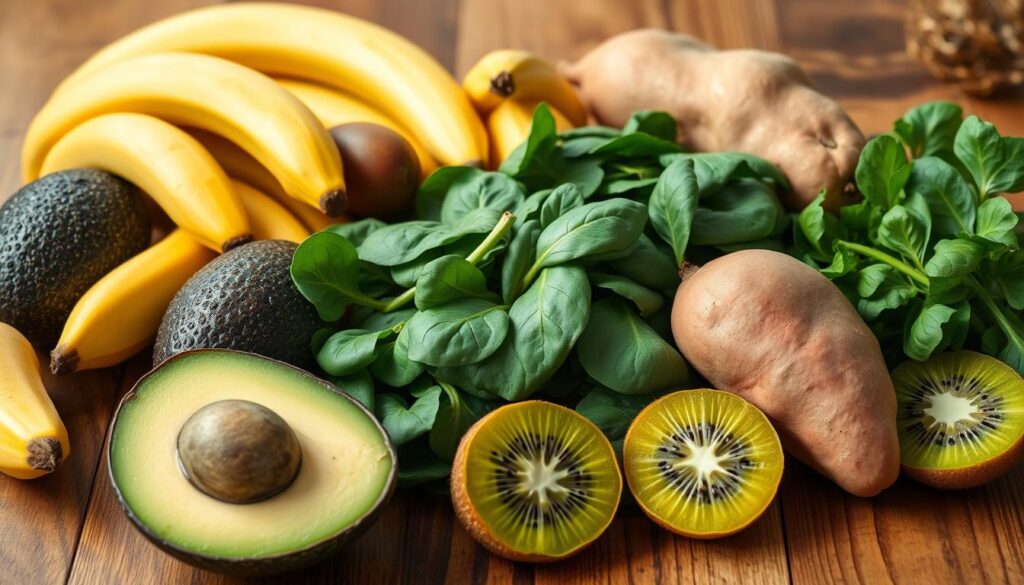
“Increased potassium intake has been associated with a reduction in cardiovascular risk factors and diseases.”
Potassium Supplements and Safety Considerations
Some people might need potassium supplements, especially if they have certain health issues or take certain medicines. But, it’s very important to talk to a doctor before starting any supplements. Too much potassium can be dangerous, especially for those with kidney problems or specific health conditions.
Potassium supplements don’t help lower blood pressure for everyone, studies show. They also don’t work well for heart attacks in some cases. But, eating foods high in potassium can help prevent strokes in both men and women.
While potassium supplements can be helpful, they should be used carefully. A doctor should oversee their use. This is because health conditions, medicines, and individual needs all play a role in how supplements work.
Potential Risks and Considerations
- Kidney health: People with kidney disease or problems might face risks from too much potassium in supplements.
- Medication interactions: Some medicines, like ACE inhibitors and NSAIDs, can affect how potassium supplements work.
- Underlying medical conditions: Certain health issues, like diabetes or heart failure, need careful potassium level monitoring.
Working closely with a doctor is key to figuring out the right amount of potassium. This ensures supplements are safe and effective for your health.
“Potassium supplements should be used with caution and under the guidance of a healthcare professional, as too much potassium can be harmful, especially for individuals with certain medical conditions or taking specific medications.”
Conclusion
Potassium is a mineral that deserves a big round of applause. It helps relax blood vessels and supports heart health. It works by making blood flow better and helping tissues get what they need.
Studies show that potassium can lower blood pressure. This is especially true when you eat less sodium. Eating foods rich in potassium, like fruits and veggies, is a great way to get more of it.
But, if you need supplements, talk to a doctor first. It’s important to use them safely and correctly. Remember, too much of a good thing can be bad.
So, let’s celebrate potassium. It’s a hero for our blood vessels and heart. With the right diet and a bit of knowledge, you can keep your heart and blood vessels in top shape.
